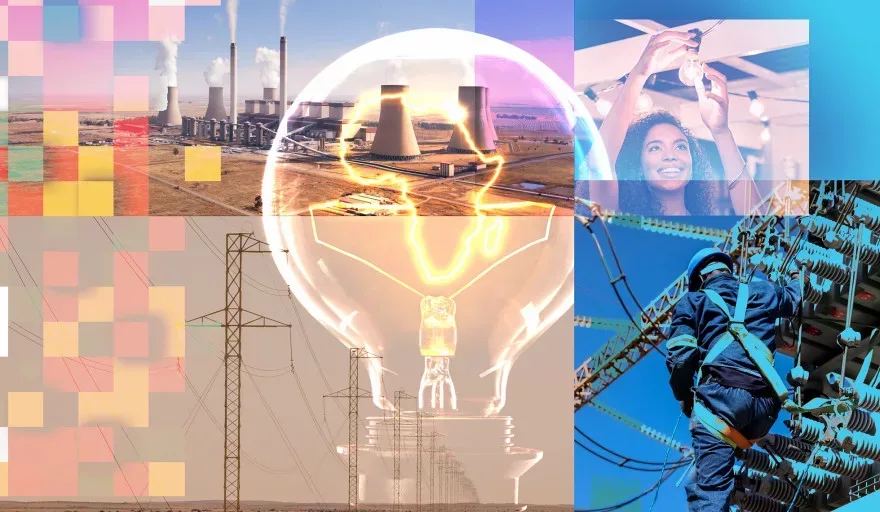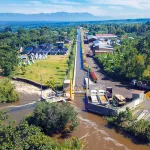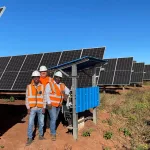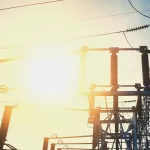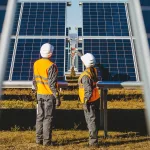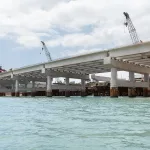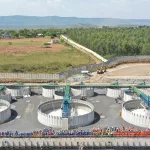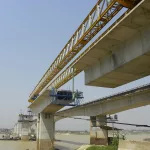The African Development Bank makes the case for adopting a new wave of energy reforms to kickstart a meaningful shift to and provide power to those who need it.
Africa’s energy sector has made significant progress, yet despite its immense energy resources, it grapples with utilising these resources to power itself.
The continent’s energy sector is plagued by low rates of electricity access, unreliable power supply, and in many cases subsidised tariffs, resulting in utilities’ inability to recover the cost of producing electricity. In many circumstances, the cost of electricity production is inflated due to the high costs of capital as a result of sector financial risks.
At the heart of these bottlenecks are issues relating to the reform of the power sector towards financial and technical sustainability. Though the power sector is experiencing its fastest growth rate in terms of generation capacity – with total installed capacity reaching 175GW in 2017, from 165GW in 2012 – close to 600 million Africans do not have access to electricity.
To resolve this paradox, we must look at the issues through the lens of a “second wave” of enhanced power sector reforms.
Since the 1990s, several African countries have carried out reforms aimed at responding to failures in the power utilities. These ‘standard model’ reforms, driven by development finance institutions like the World Bank and the International Monetary Fund (IMF), included commercialising electricity utilities, creating independent regulation and adopting cost-reflective tariffs, restructuring national monopoly companies to separate generation, transmission and distribution services, and boosting private sector participation.
Despite these reforms, Africa’s power sector largely remains the traditional integrated monopoly utility structure, struggling to meet financial obligations and unable to expand and grow in support of economic growth agendas. In a study by the African Development Bank and the Association of Power Utilities of Africa (APUA), only 10 of the 42 countries assessed have wholly or partially unbundled the sector.
The “standard” model reform overly focused on restructuring that did not leverage much impact. A second wave of reforms is needed, tailored toward the future development of the sector.
In this second wave, regulatory restructuring is identified as the first step for most African countries. Establishing independent regulation will foster an equitable and rules-based playing field for electricity providers, consumers and private sector actors. But the independence of these regulators from political influence and other entities remains a challenge.
Of 34 participating African countries sampled by the African Development Bank’s Electricity Regulatory Index (ERI) 2019, just eight regulators, representing 24 percent, have developed quality of service regulations which include provisions for monitoring the financial, commercial and technical performance of regulated utilities. In addition to this, even fewer regulators can monitor performance against these regulations.
The other key component of the second wave of reforms is the drive towards sector-wide operational efficiency and good governance. This reform will aim to build on the gains realised to date, but further address issues around operational efficiency, improved governance, transparency, improved technical performance and financial sustainability. It will also address lessons learned and gaps identified from the first wave.
Africa’s vast untapped energy resources coupled with the urgent need to connect the millions of Africans without access to electricity, constitute a huge market for investment that is worth billions of dollars. But to unleash these billions of dollars’ worth, Africa’s energy sector needs to ensure real transformation. The region’s power sector would need improved reforms, this second wave, that is grounded on sound business principles and market needs. Key elements are financial and technical sustainability reforms focused on driving lower costs and innovative business models that incorporate various players. These reforms must result in providing access to millions of Africans, opening up capital investment flows, and engendering power sector trade.
To close the gaps in electricity access, countries must adopt policies and institute purposeful agencies to drive electrification efforts. Off-grid renewable energy has gained increased prominence, with some $1.1 billion invested in off-grid solar projects and enterprises across sub-Saharan Africa. The costs of extending off-grid renewable energy have fallen, but the continent has to do more to improve efficiency, affordability and reliability.
Reforms have indirect effects on the performance of the power sector. This performance provides a boost to private sector confidence. The fastest-growing sources of private sector investment in the industry are Independent Power Producers (IPPS), alongside Chinese-funded projects. IPPs are now present in over 30 countries, with 270 operating or in construction totalling over 27GW of capacity.
The reason for low access figures in Africa is mainly because governments and state entities cannot finance the electrification of their countries alone. They need private sector participation.
Private sector participation in the traditional transmission environment is another opportunity that can greatly reform the power sector and foster significant growth in access; however, a majority of African countries are yet to allow private participation in electricity transmission. The monopoly nature of the transmission business does lend itself at the very least towards an independent transmission utility business. This can be a step towards attracting private participation in the transmission business and the creation of competitive markets.
Whilst having competitive power markets is still a distant proposition in Africa, the long road starts with creating the environment for an independent transmission business and possibly a market operator. Independent transmission also allows for greater private sector participation in the generation sector and provides greater investor confidence to spur the industrialisation of the continent. Governments have reacted to this and there are signals of change.
The current interconnections happening in the region are not enough to enhance power system performance. African countries must increase power trade among themselves to improve electricity access and reliability. This holds the potential to leverage substantial reduction in power generation costs. According to the Programme for Infrastructure Development in Africa (PIDA) Outlook report, full integration and unlimited power trade would save $1.117 billion over the 2011–2040 period, that is, $33 billion each year and 17 percent of the cost of the continent’s electricity.
Looking ahead, optimism about the sector will largely depend on effective and comprehensive political, economic and financial reform measures. These reforms should not only be about restructuring utilities but also about placing them on a sound financial, technological and commercial footing, allowing for open access and opportunities for participation by the private sector at all levels across the value chain.

